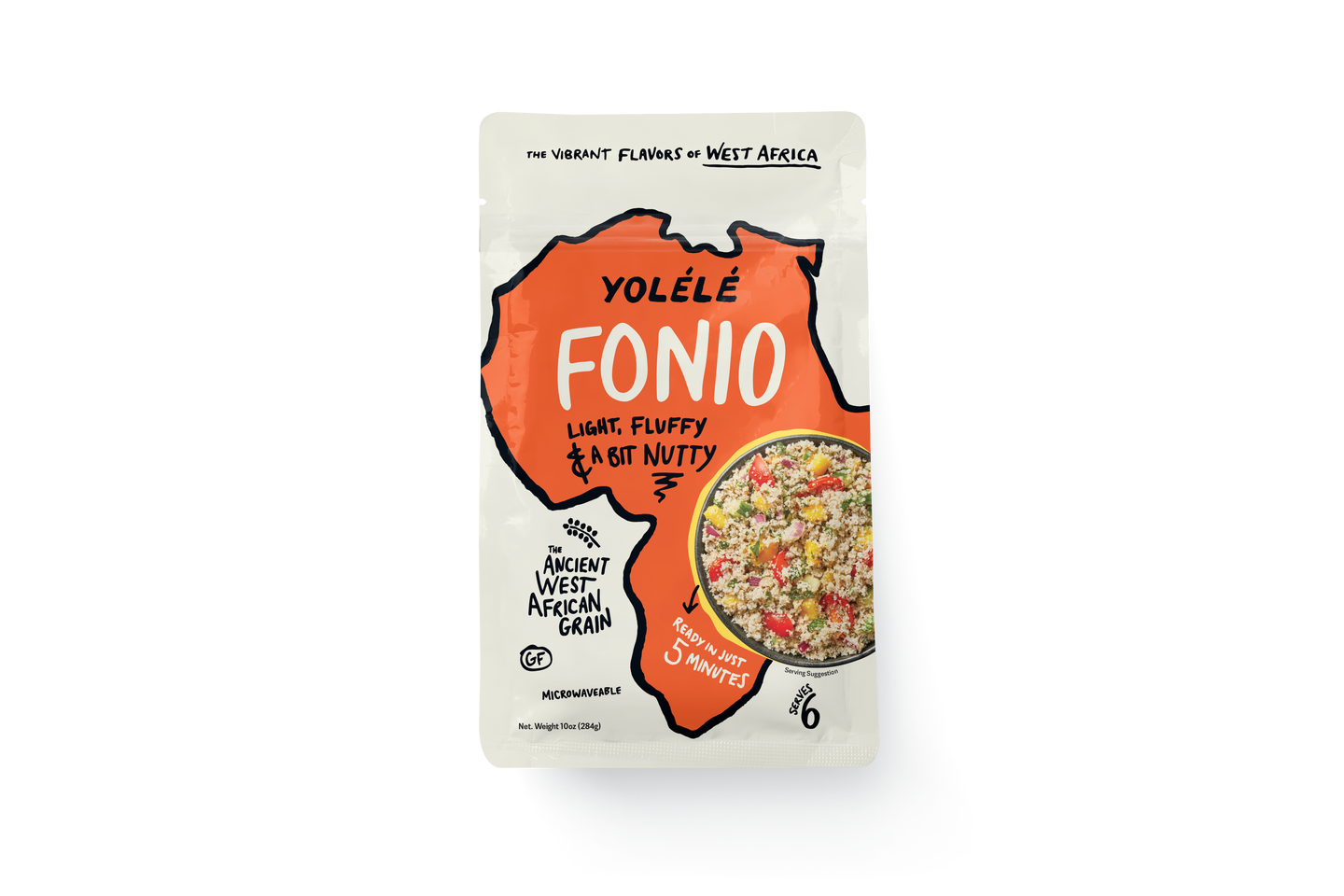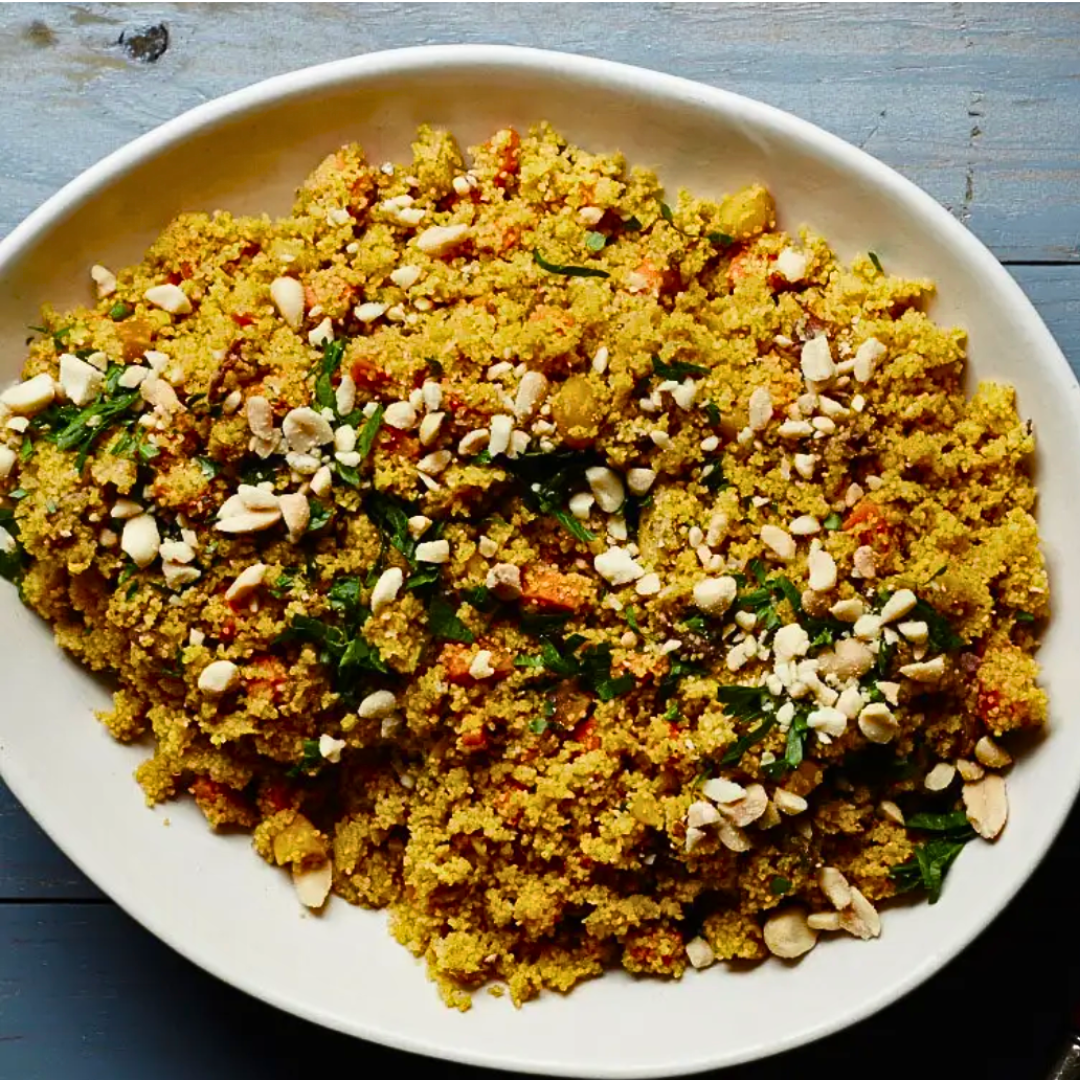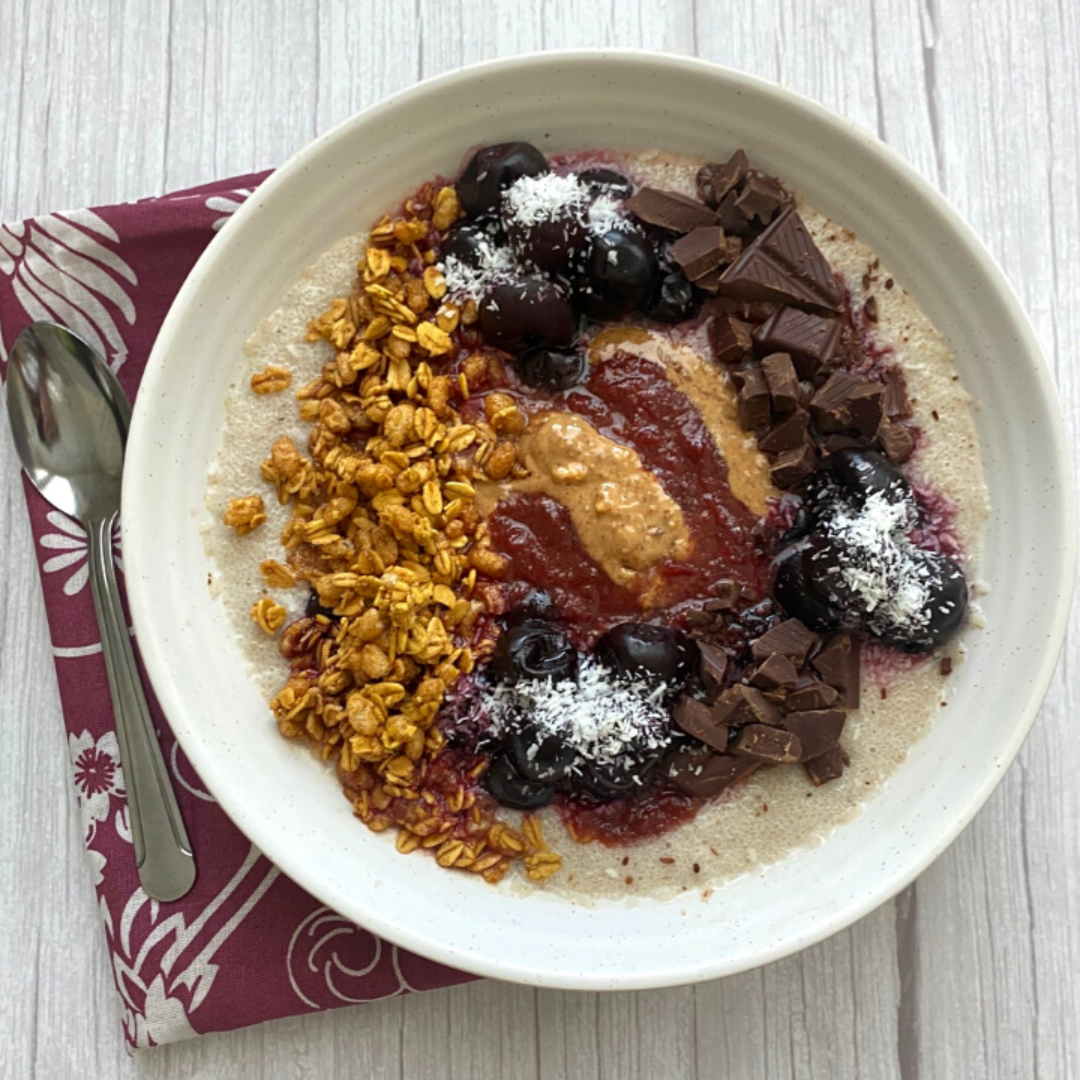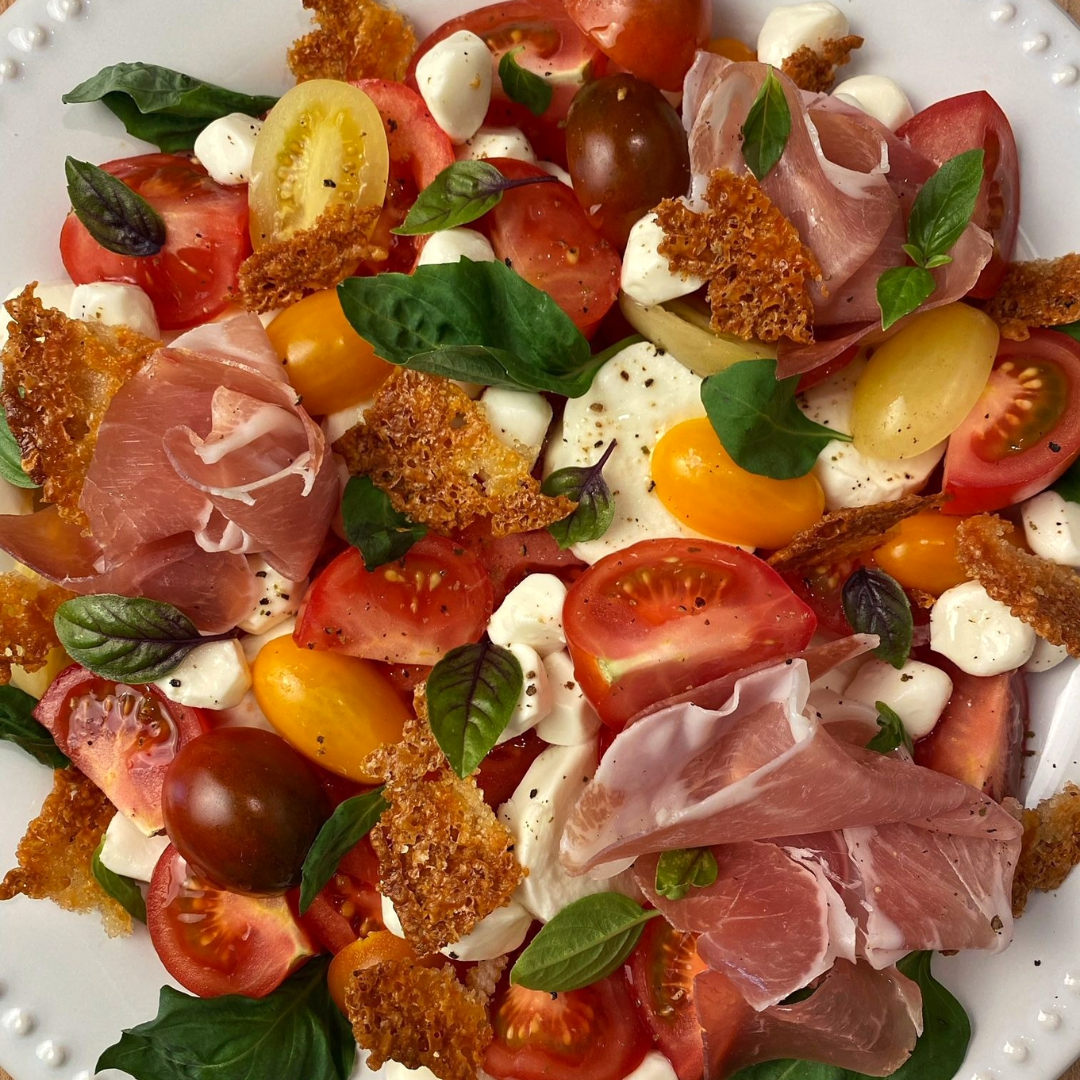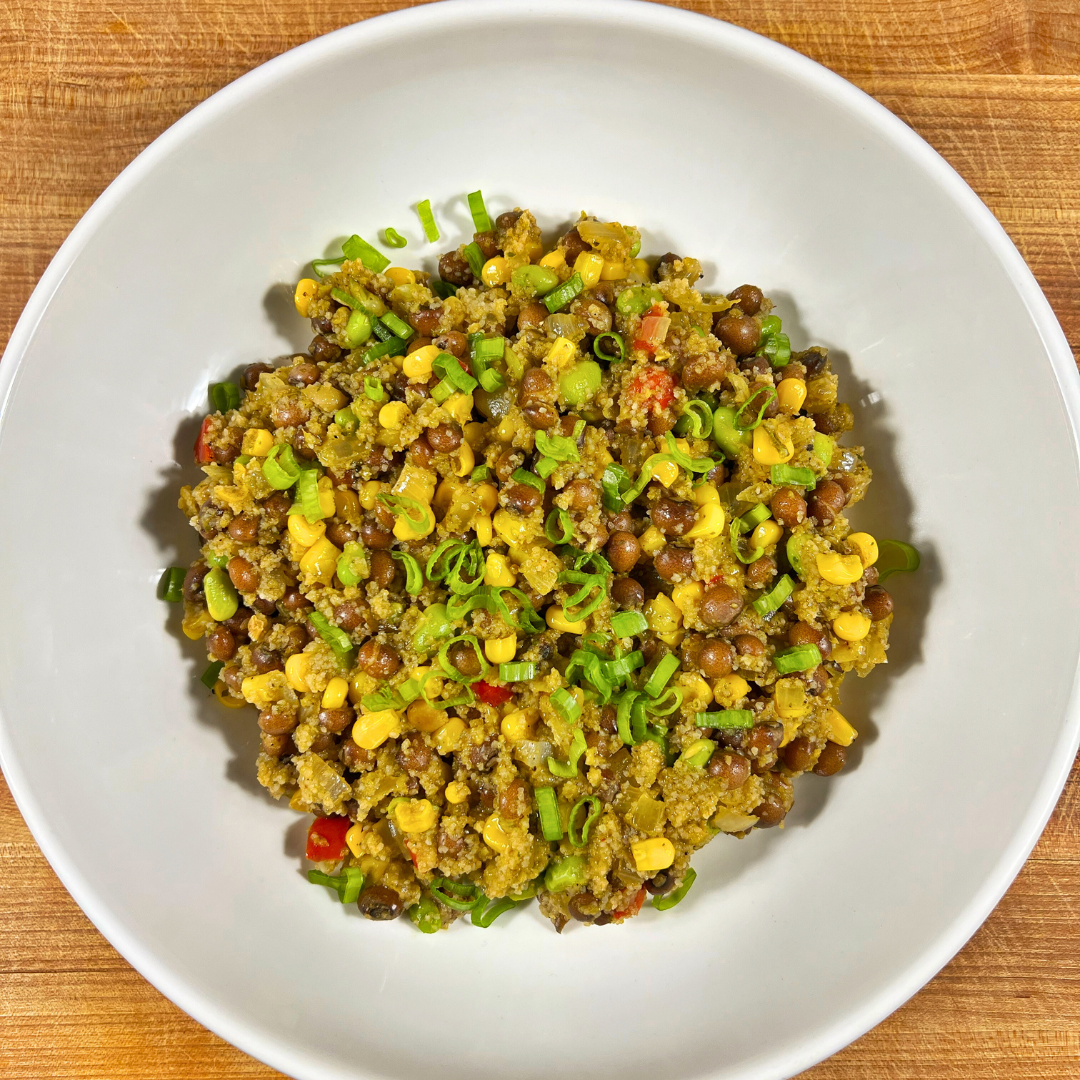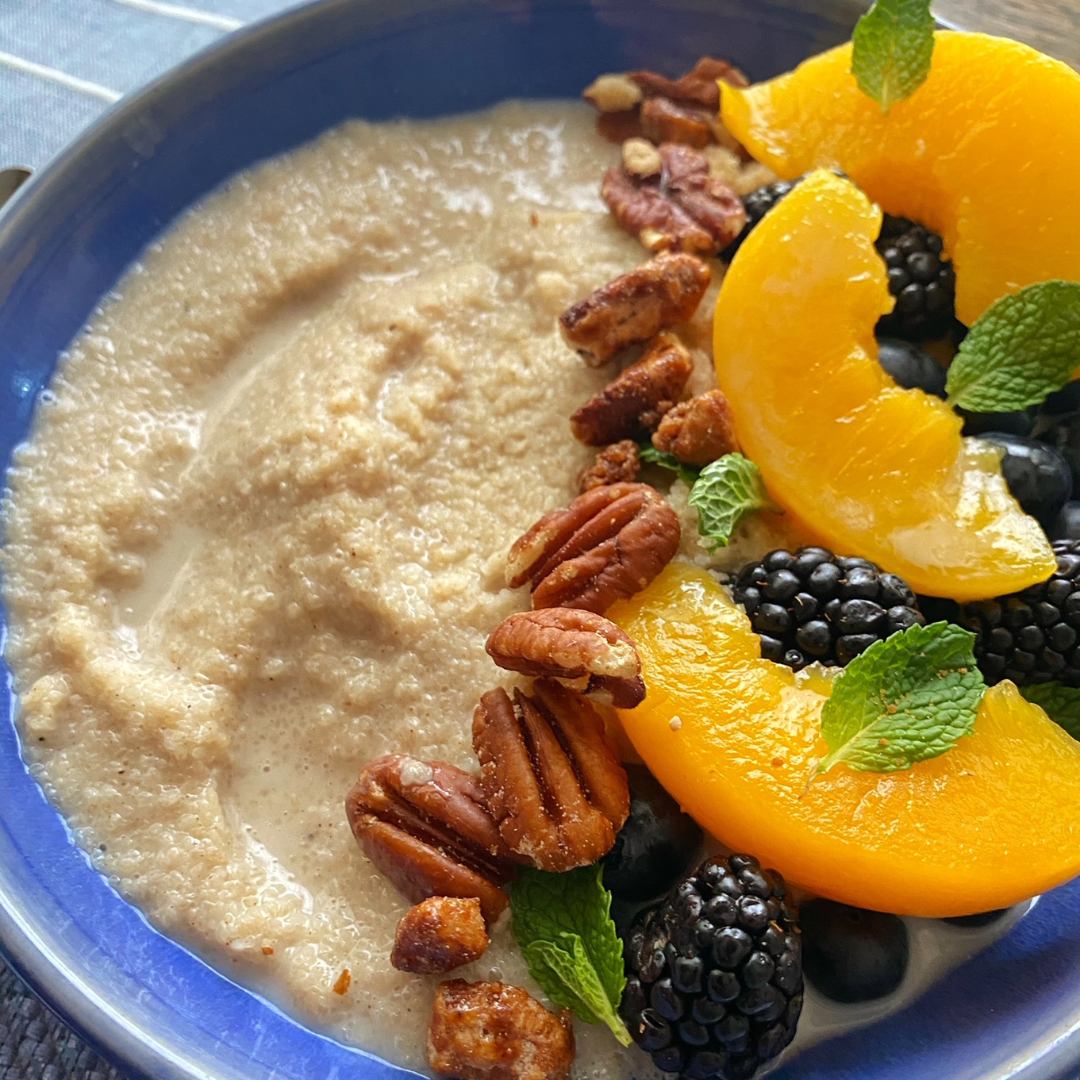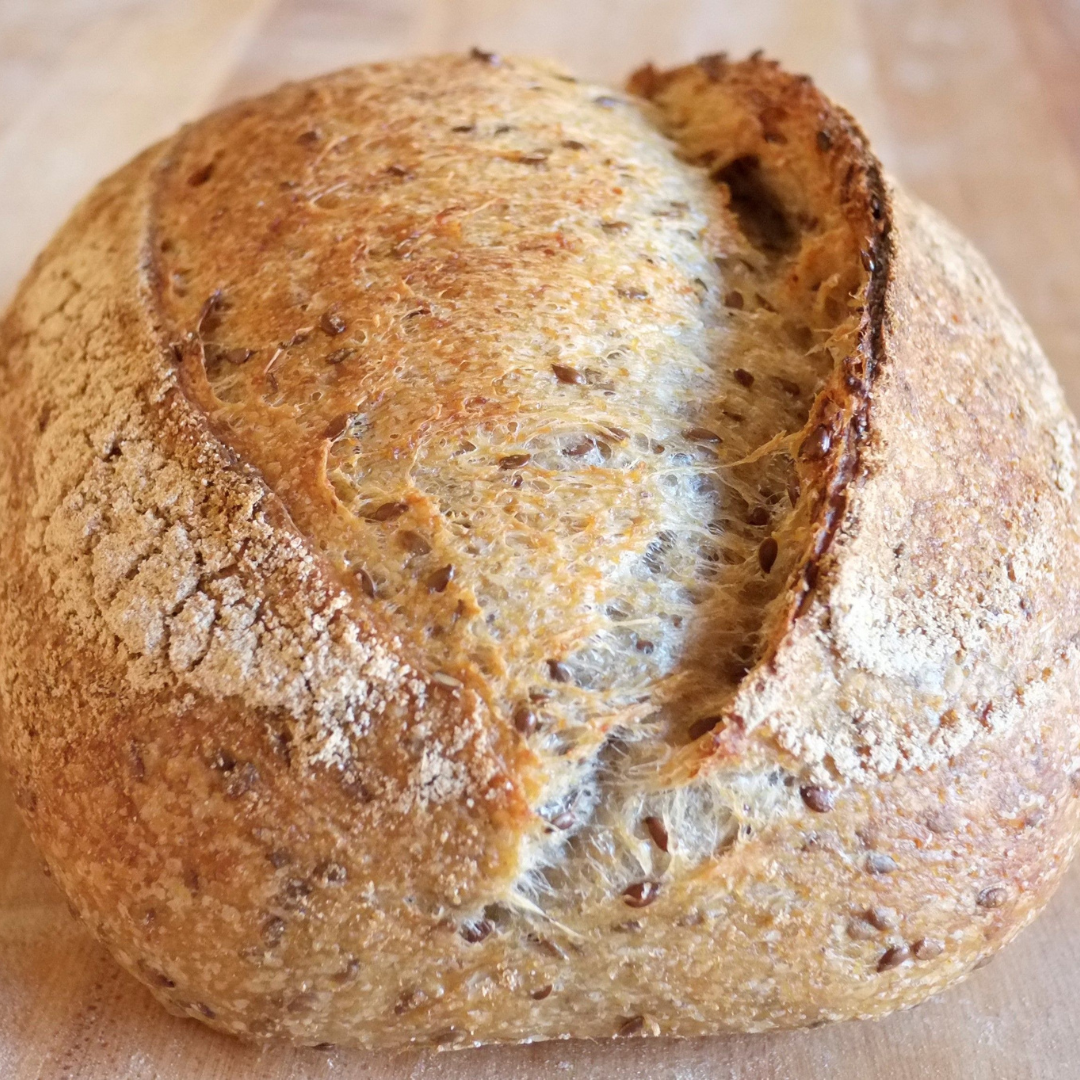
Making bread from scratch is a daunting challenge that’s totally achievable, and can be done over the course of a day. With a little love, this bread is soft, spongy, and crisp on the outside. Fonio helps the dough retain moisture when baking and creates a silky and nutty texture throughout. If you don’t have any sourdough starter it’s easy enough to make with just two ingredients, check out this recipe for help. Ripe starter is essential in lifting your bread and giving it its rise, making that soft and bubbly liveliness that we all love. We recommend weighing all your ingredients when baking, not only because it’s more accurate, but it’s actually easier. If you don’t have a kitchen scale yet, we highly recommend getting one if you plan on taking on at-home-baking, it’s essential for accurate readings and a perfectly risen loaf.
This recipe is adapted from a fellow fonio lover, Matt McMillen, who knows how to make a killer loaf. Check out his instagram @quartet1977 for any and all baking inspiration.
30 Min Prep
40 Min Cook
4 Servings

by: Yolele
Ingredients
- 400 grams bread flour
- 100 grams whole wheat flour
- 390 grams water
- 100 grams ripe sourdough starter
- 11 grams salt
- 250 grams Yolélé Fonio, cooked according to package instructions and cooled to room temperature
- 60 grams flaxseeds
- 65 grams hot water
Preparation
-
Step 1
Mix the two flours together in a large bowl and make a hole in the center by sweeping the flour to the sides with your fingers.
-
Step 2
Before adding water to the flour, make sure it’s about 80°F. Set aside 25g of water and pour the remaining 265 g into the hole. Note: slightly colder water is better in the summer; in the winter, try a couple of degrees warmer water. No more than 85°F.
-
Step 3
Add the starter to the water and stir with a fork to break up and dissolve it fully.
-
Step 4
Gently mix the flour and water with your hands until there’s no dry flour left in the bowl. Scrape any dough that’s stuck to your hand back in the bowl. Cover the bowl and let the dough rest for 20-30 minutes.
-
Step 5
Put the flaxseeds in a small bowl and fill the bowl with hot water from the sink. Let flaxseeds soak and cool to room temperature.
-
Step 6
Add the salt and the remaining 25 g water to the dough and mix thoroughly by hand to dissolve and distribute the salt evenly. At first, the salt will cause the dough to fall apart a bit, but as you keep mixing, it will come back together again. Once it does, mix by hand for another minute or two. Cover the bowl with a dish towel and let rest on the counter for 30 minutes.
-
Step 7
Remove the cover, and with the bowl in front of you, lift the side of the dough that’s farthest from you and fold it over the center. Give the bowl a quarter turn and repeat (do this a total of four times). Cover the dough and rest for thirty minutes. This folding will help develop the gluten in the flour and give your dough structure that will allow it to hold its shape.
-
Step 8
Add cooked fonio and flaxseeds to the dough and fold together thoroughly by hand. Let the dough rest for another 30 minutes.
-
Step 9
Repeat step 7 four times at 30 minute intervals, not including when you added the fonio and flaxseed. Do the last couple of folds gently to avoid losing any air bubbles that have developed in the dough.
-
Step 10
After finishing step 9, you should see a fair amount of activity in the bowl. You’re looking for some bubbles on top and a rise of about a third to indicate that this stage, called bulk fermentation, is done. The dough will also slightly pull away from the sides of the bowl and form a bit of a dome. How long this takes depends on several factors, primarily the strength of your starter and the temperature of your kitchen and the temperature of the water that you started with. Your dough may be ready in as few as three hours or as long as five. With sourdough, it can be hard to predict precise times.
-
Step 11
When it’s ready, turn the dough out of the bowl onto an unfloured table or countertop.
-
Step 12
Gently shape the dough into a ball. I like to use a wet bench scraper so that it doesn’t stick to the dough. Start by angling the bench scraper under the dough and pushing it away from you. It will start to form an oval. Then, as if you were making a u-turn, bring the dough scraper back around until you are pulling the dough towards you. It should now look more like a ball and have some tension on the surface. It doesn’t have to be perfectly shaped but you want to handle the dough as little as possible at this stage. Cover with a towel and let rest for 20-30 minutes.
-
Step 13
To shape, lightly flour your workspace and the surface of the dough. Lift the dough with your bench scraper and gently turn it over and set it down on the flour.
-
Step 14
Lift the edge of the dough closest to you and fold it over the center. Press gently so that it stays in place. Now, fold the right side into the center, followed by the left side. Then, lift up the side farthest from you and fold it over the center. Finally, lift the edge farthest from you and pull it up and over, rolling the dough until the seam side is on the bottom. Lift and gently place in a floured banneton. Refrigerate overnight.
-
Step 15
Put a covered Dutch oven in your oven and heat your oven to 500°F for an hour.
-
Step 16
Carefully place your shaped bread into the Dutch oven, score, and bake for 25 minutes with the lid on the Dutch oven.
-
Step 17
Remove the lid and bake for 15 more minutes, until nice and dark.
-
Step 18
Cool on a rack.
In this Recipe...
Fonio
Fonio is a regeneratively grown, community-building, really small ancient grain that’s been celebrated in West Africa for over 5,000 years. A versatile, nutrient-dense, anything-but-boring alternative to rice, quinoa or couscous, fonio brings the spirit of West Africa to your kitchen in just five minutes. It’s a simple, everyday sidekick to grilled meats, fish, and veggies, soaking up sauces and juices beautifully.
